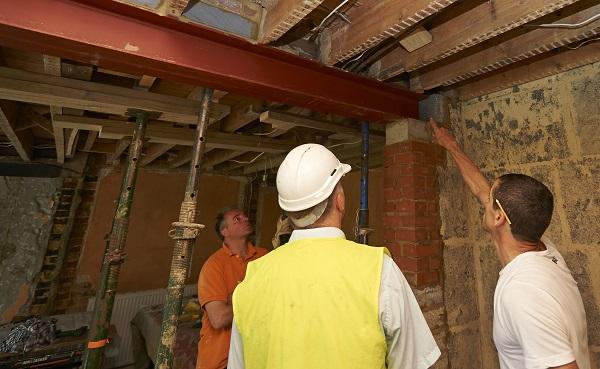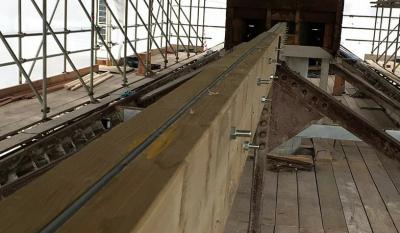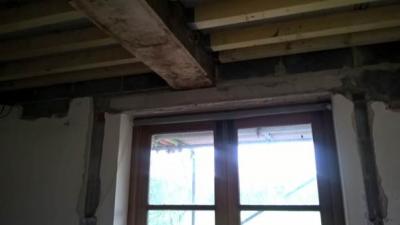Beware: Don’t just bolt your beams!
The traditional approach used when two steel beams are provided to support a cavity wall has been to design the beams to each carry half the total load and then connect them with pipe spacers and bolts, even when the loading to each beam was not equal.
This view has been challenged by many structural engineers who say you should not rely on spacers and bolts to fix them together. This becomes more important where the beams are likely to carry different loads, a typical situation in a cavity wall where the inner leaf carries the floor joists, resulting in significantly different loads on the inner and outer beams.
It is common for structural engineers to specify I-beams, also known as Universal Columns (UC), for situations described above. The horizontal elements in an I-beam are called “flanges”, and the vertical element is called the “web”.
I-beams are excellent at resisting vertical loading and bending as these are parallel to the web. However, I-beams are generally weaker in torsion, which may lead to twisting or deflection in the beam, particularly when unevenly loaded – this could result in cracking of masonry above, and in severe cases this could lead to failure of the beams.
So, steel beams and their connection details should always be designed by a competent structural engineer. Depending on the individual situation and the loadings involved, the structural engineer may specify one of several options to connect beams together and reduce torsion, such as:
- using bolts and spacers at regular centres
- welding the beams together or providing a continuous welded plate over the top of both beams
- provide web stiffeners between the flanges of each beam
Ideally, onsite welding should be minimised where possible to reduce fire safety risks. If welding is unavoidable, it should be adequately planned and carried out in a safe manner by a competent person – and remember also to check if the client has a ‘hot works permit’ approval process in place before commencing.
Want to read more about traditional building techniques and structures?
Take a look at our articles from the "My dad told me about them!" series. Our most popular ones include:
- "My dad told me about them!": Flitch beams
- "My Dad told me about them!": Drain interceptor traps
- "My Dad told me about them!": Dragon ties
- "My Dad told me about them!": Lath and plaster ceilings
You might also find this article useful: Beware of point loads on beams.
Please Note: Every care was taken to ensure the information was correct at the time of publication. Any written guidance provided does not replace the user’s professional judgement. It is the responsibility of the dutyholder or person carrying out the work to ensure compliance with relevant building regulations or applicable technical standards.
This article was updated on 1 August 2022
Sign up to the building bulletin newsletter
Over 48,000 construction professionals have already signed up for the LABC Building Bulletin.
Join them and receive useful tips, practical technical information and industry news by email once every 6 weeks.
Subscribe to the Building Bulletin




Comments
Reply
Submitted 5 years 5 months ago
Sorry, we're unable to provide advice for individual projects. In the first instance we would advise discussing this with your building control provider.
Kind regards
Barry, LABC
Extending a steel beam.
Submitted 5 years 3 months ago
I currently have a steel beam spaning approximately 2.4m and sitting on an old return wall/pillar and 50mm from internal wall. However, I need to extend it at one side by 150mm so it can rest on a new concrete pad on internal wall and remove pillar. I believe the support is a 175x100mm 'C' beam???
Can I bolt. '125x65mm PFC on to existing to extend?
Thanks
Reply
Submitted 5 years 2 months ago
This isn't something we can comment on here I'm afraid. You'll need a site inspection and verification of dead and imposed loads and you'll need to engage the services of a professional advisor.
Kind regards
Barry, LABC
Add new comment